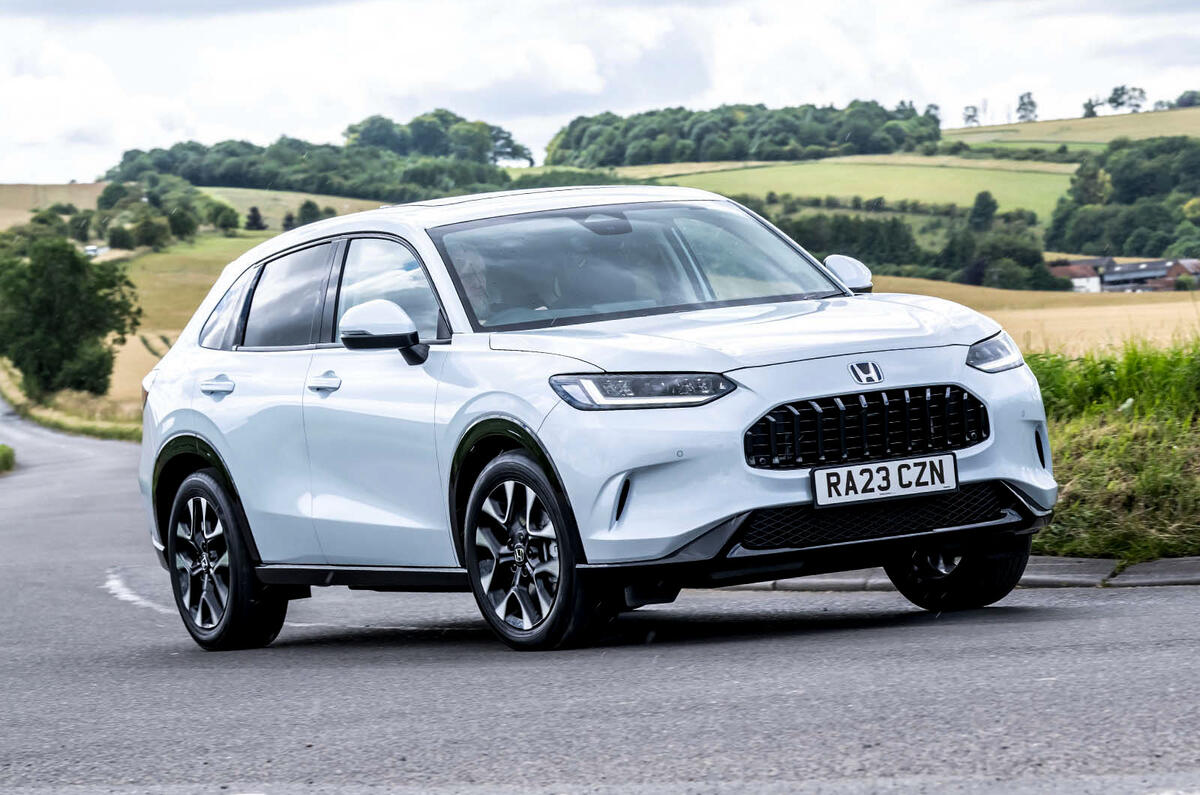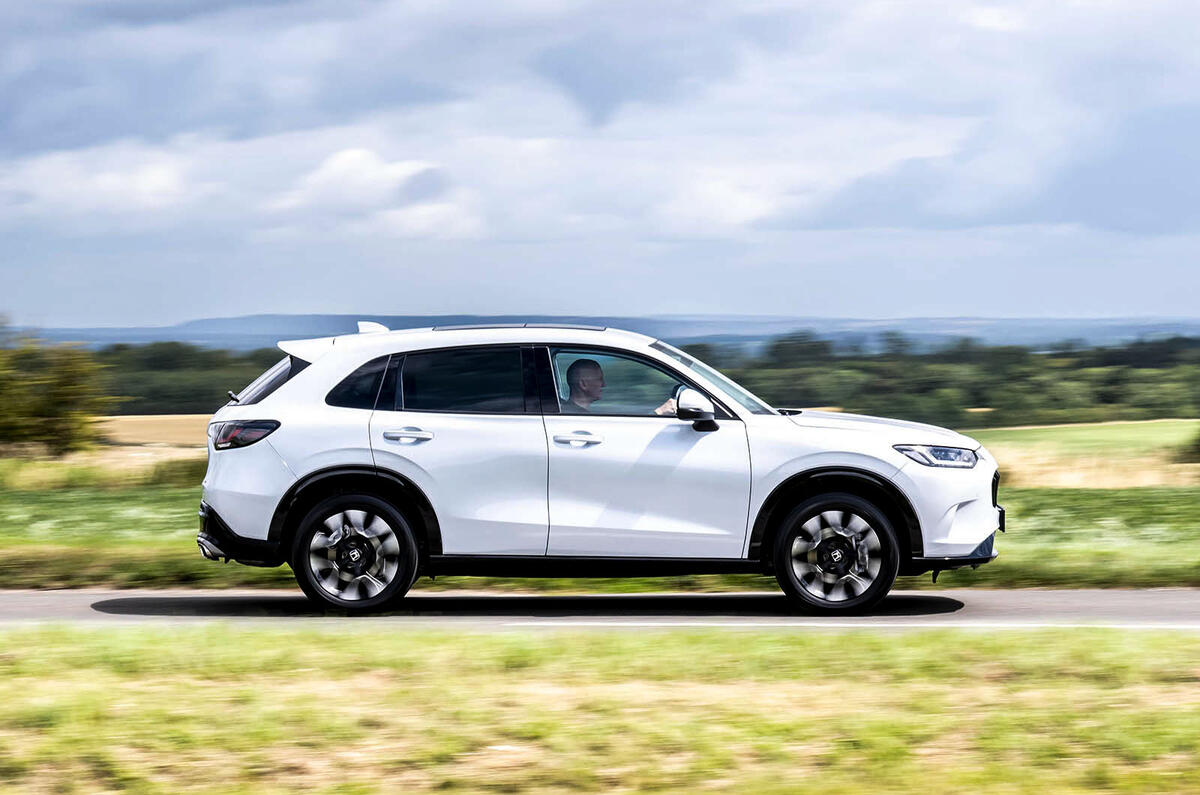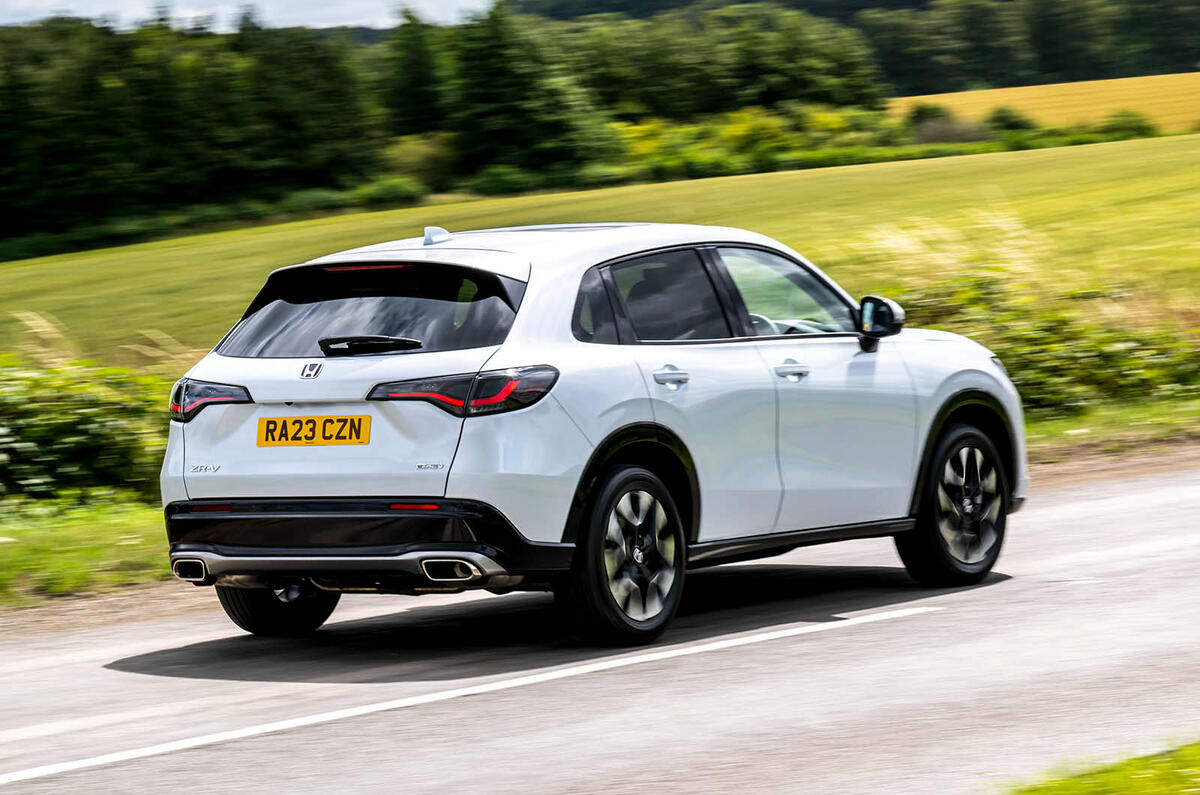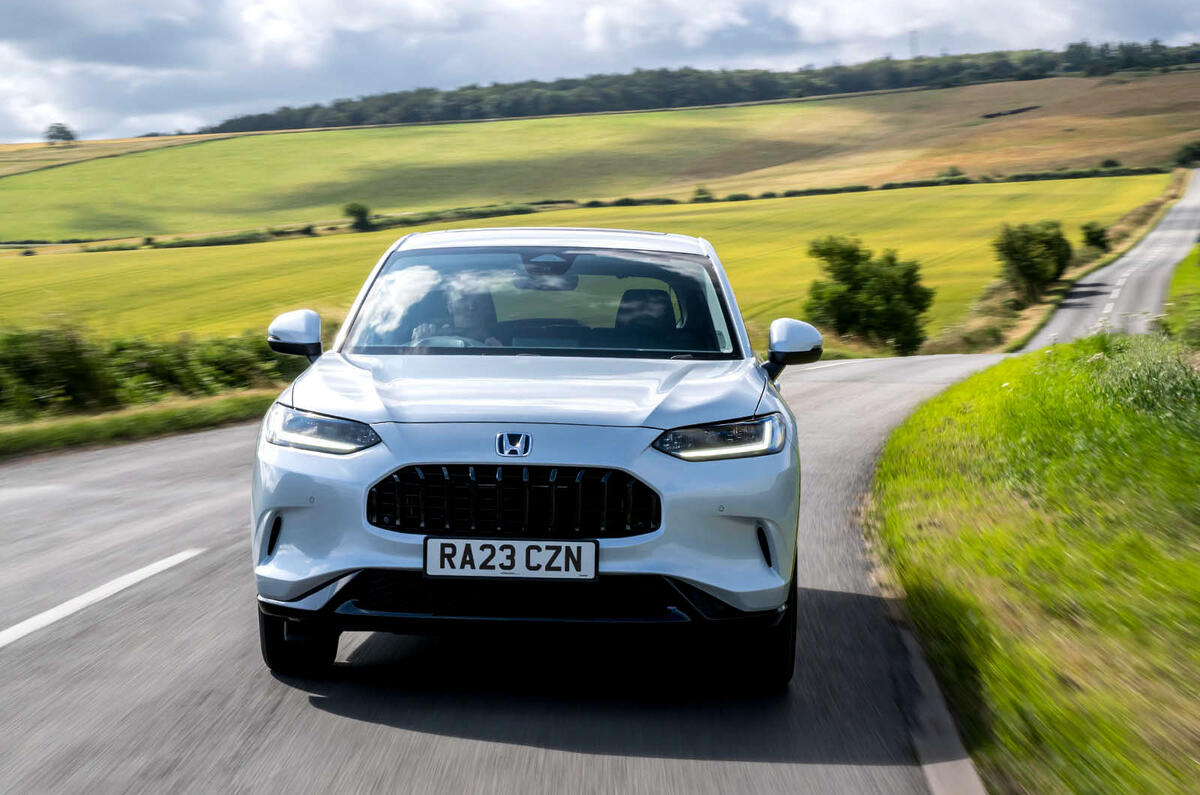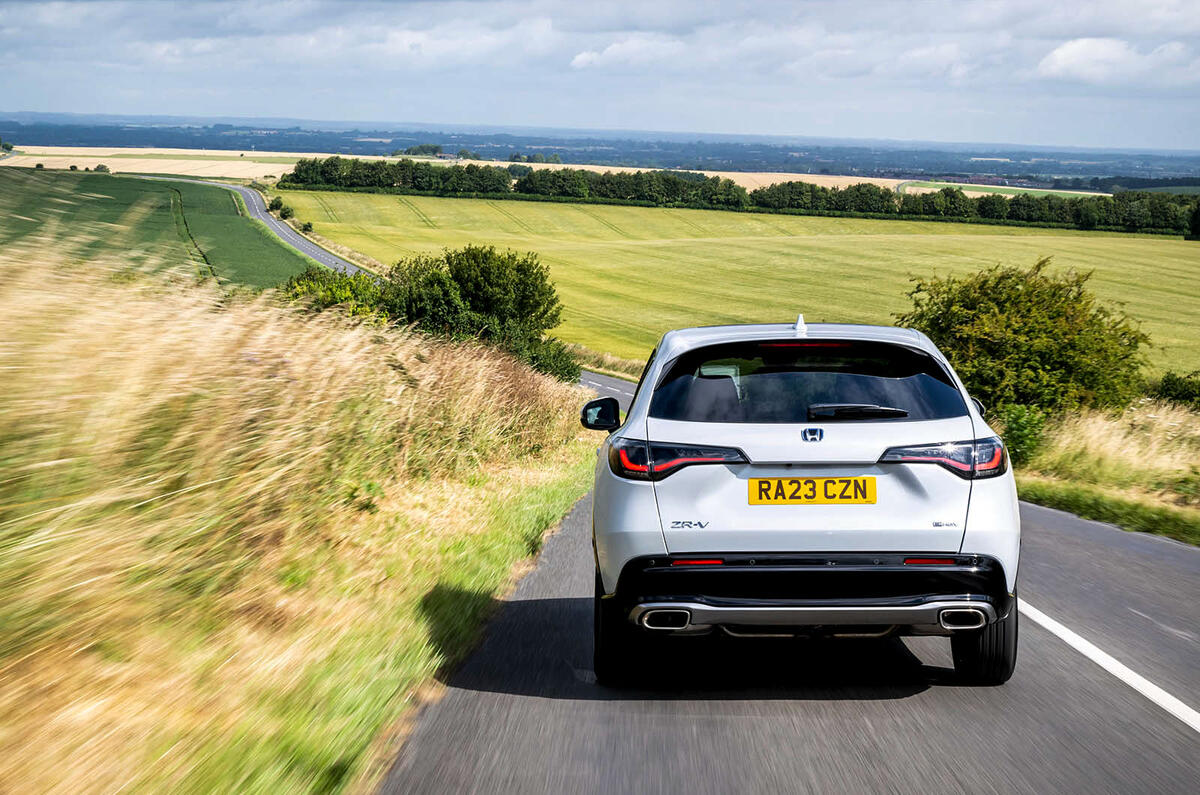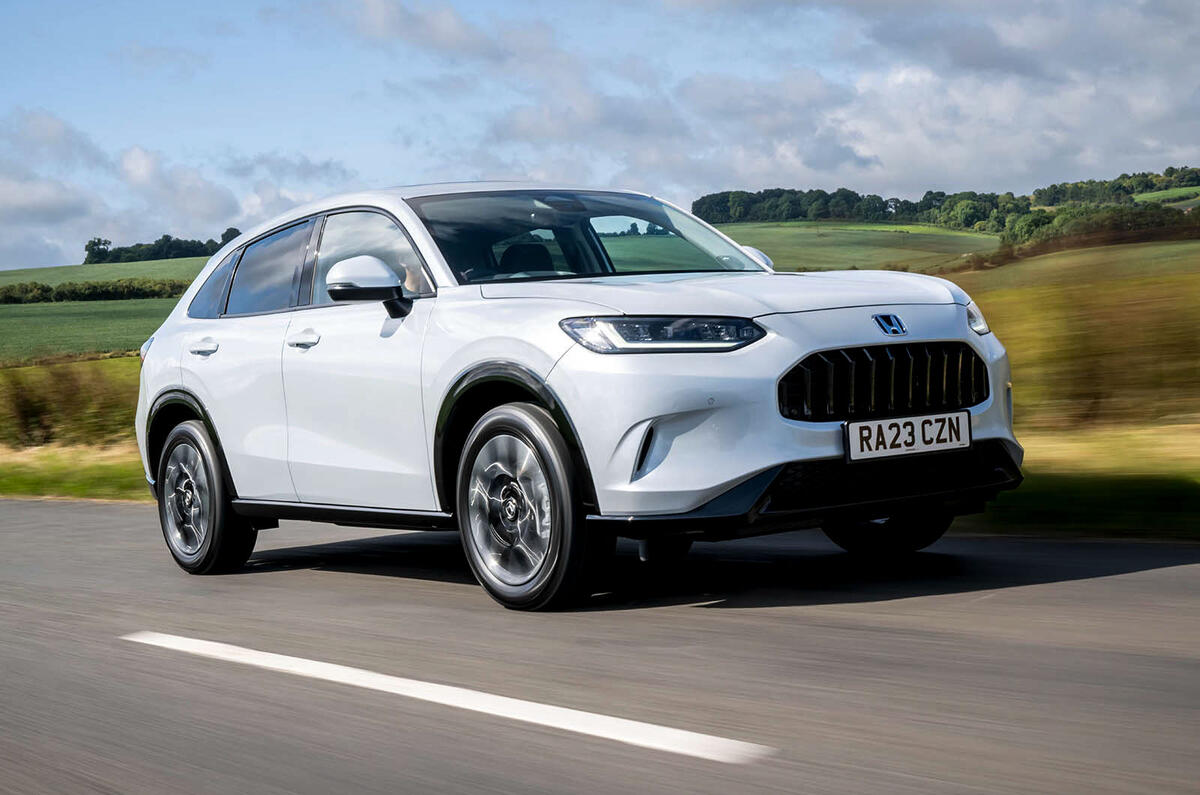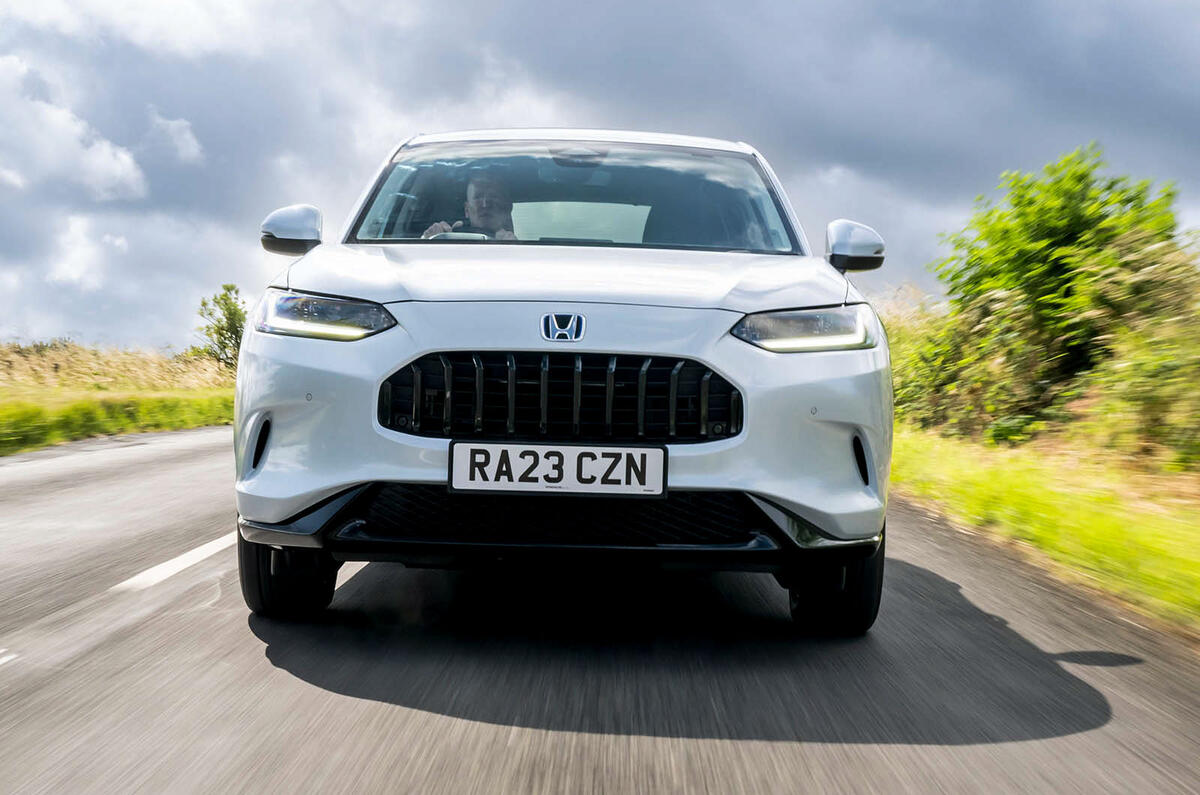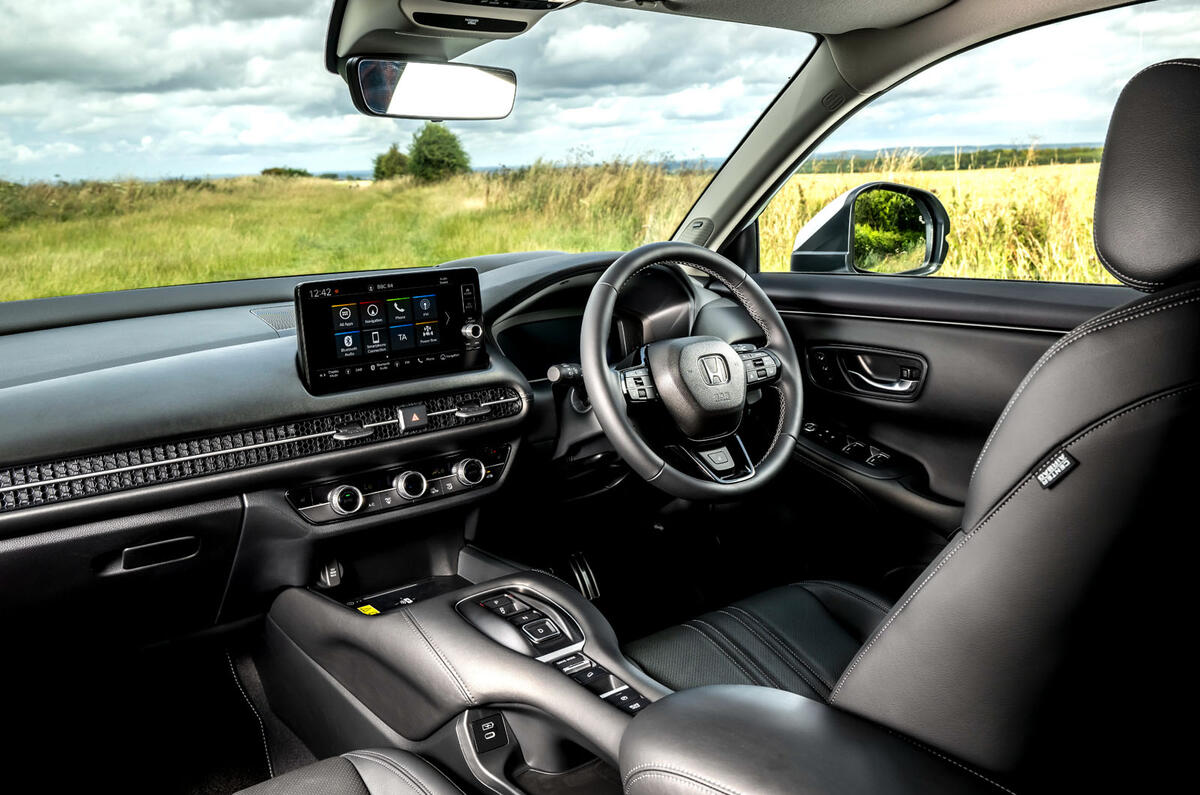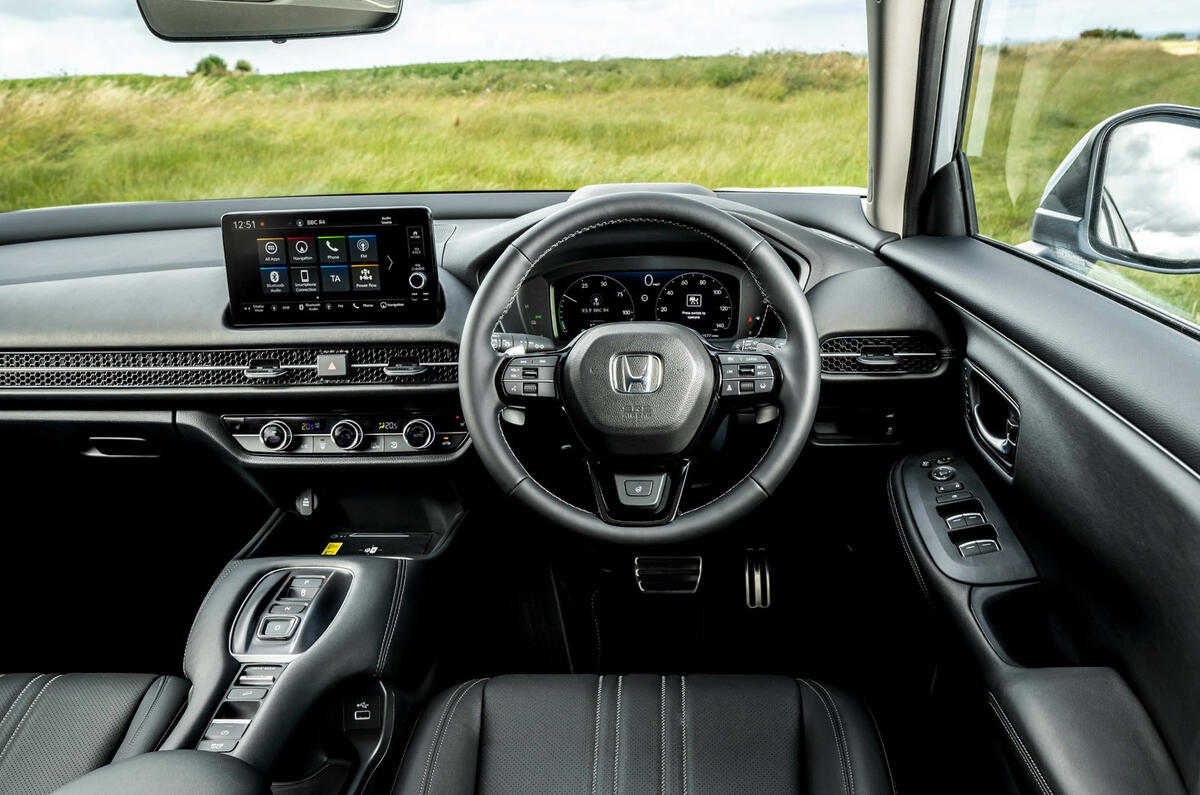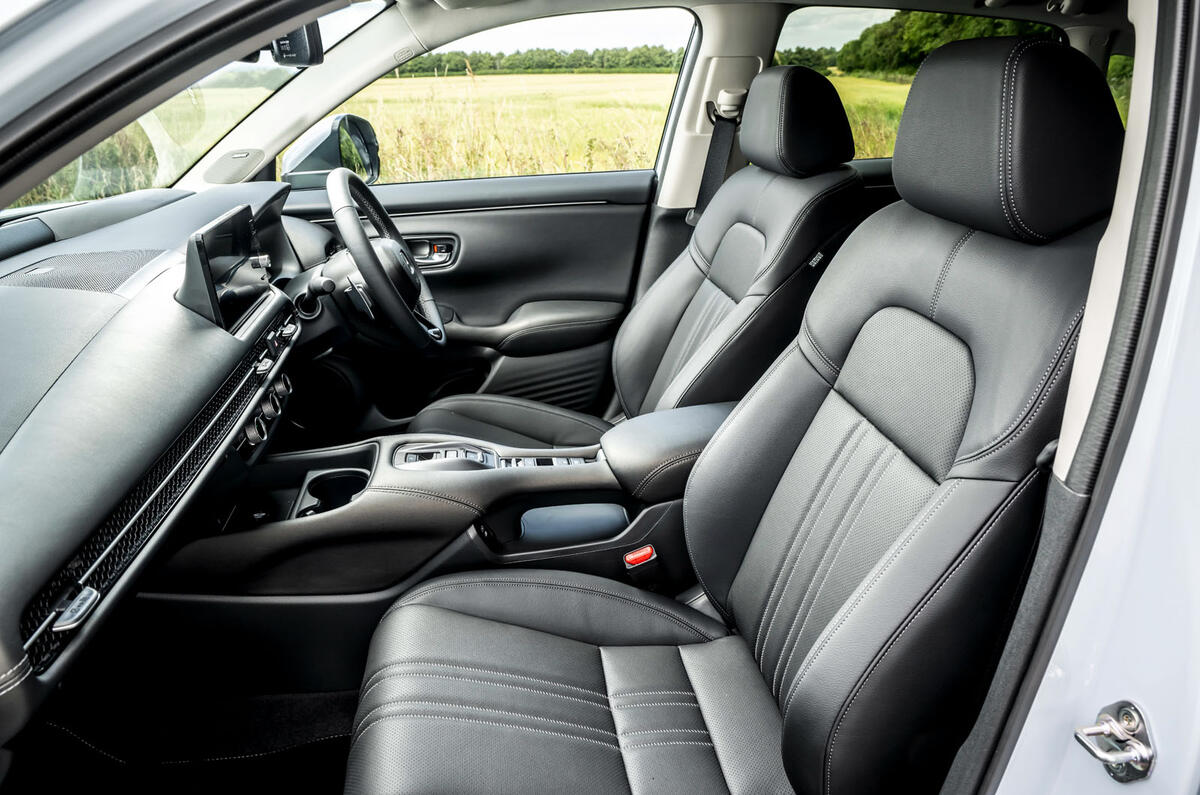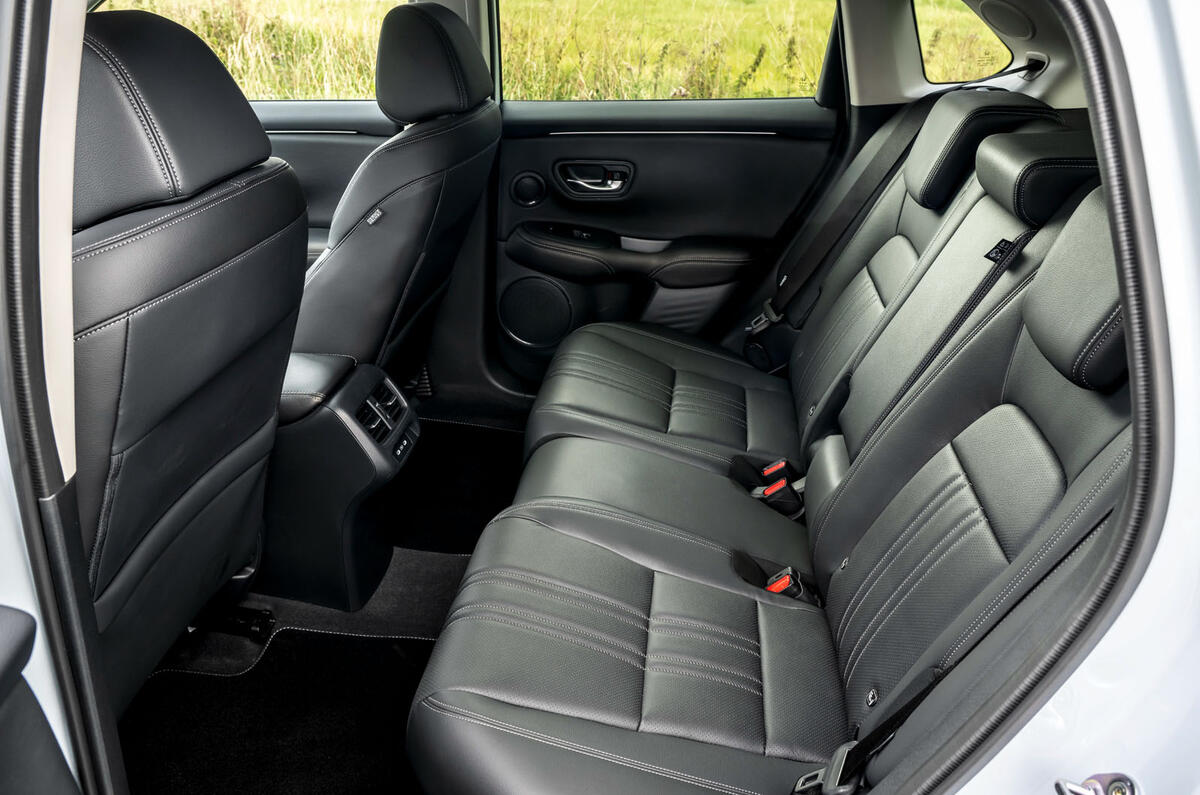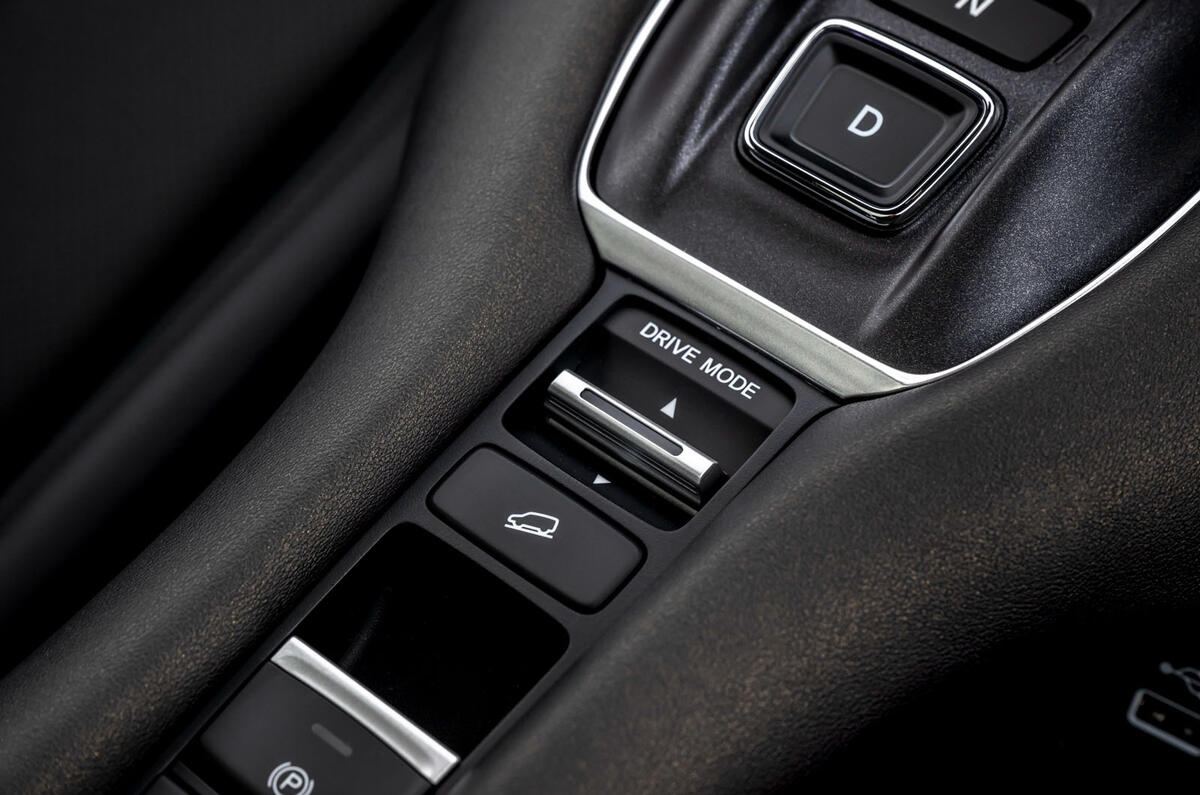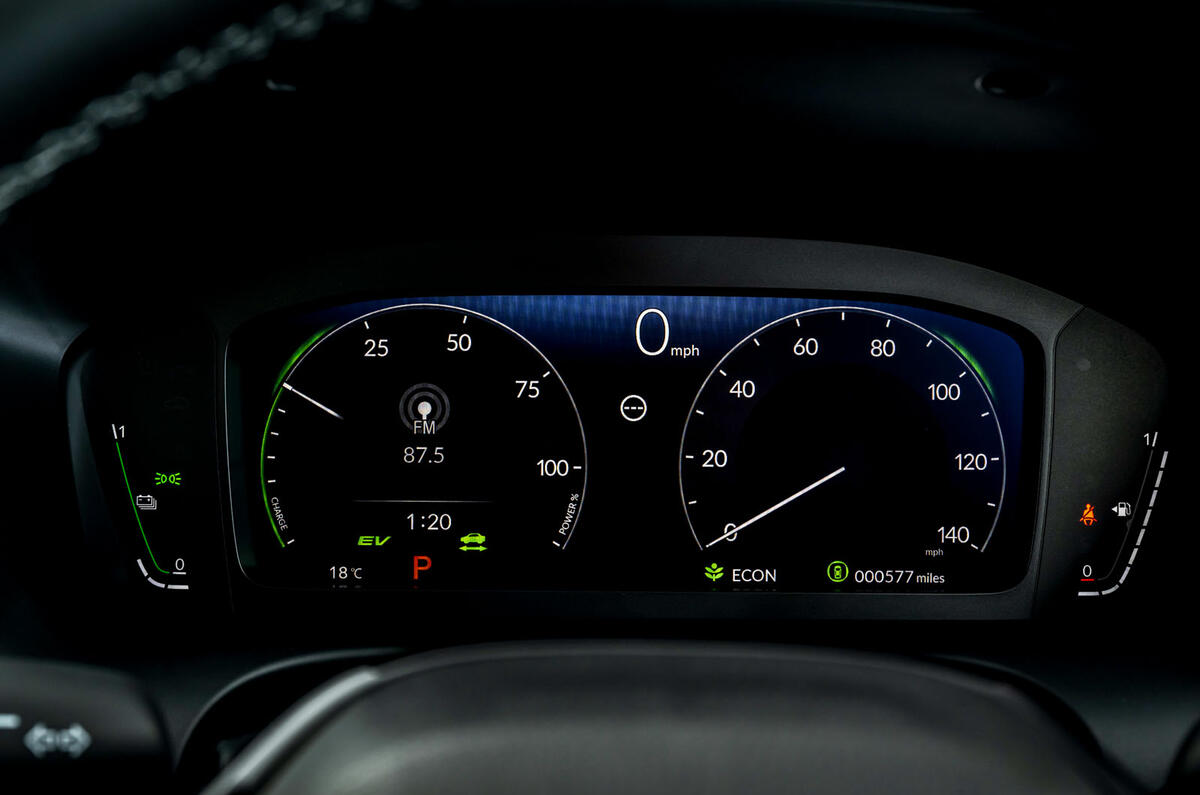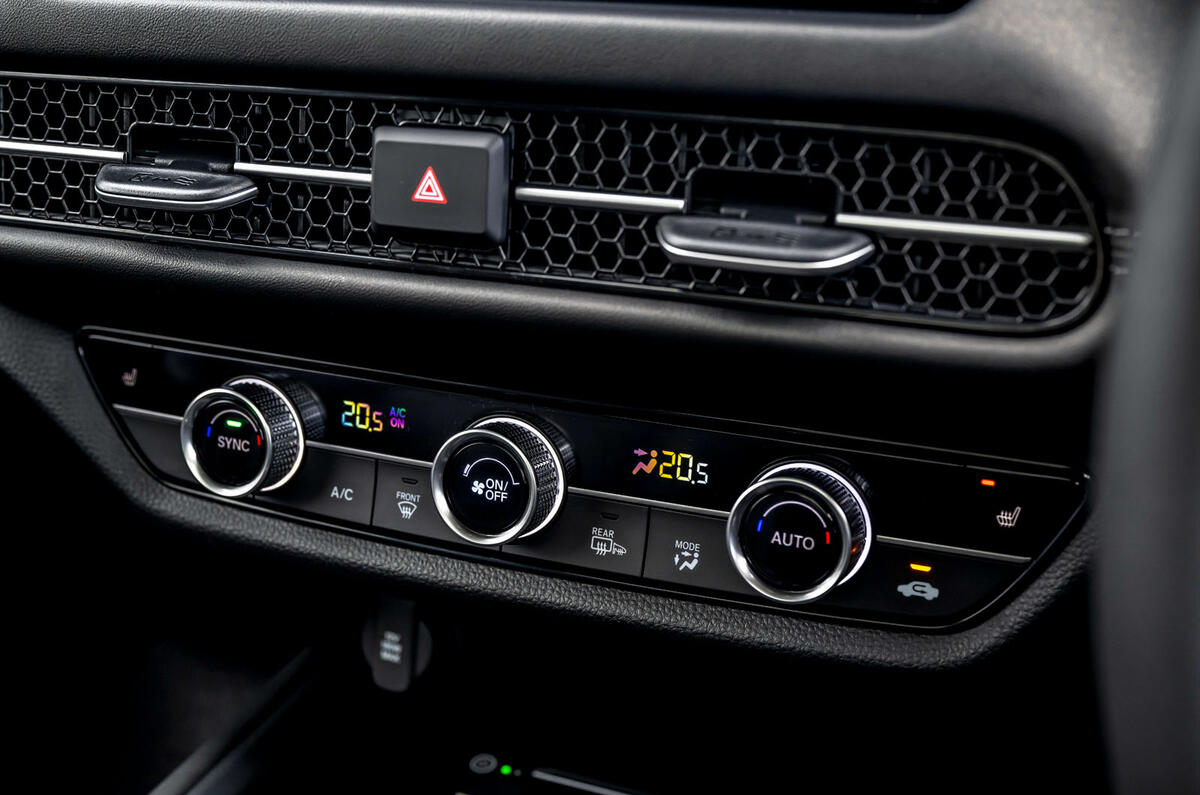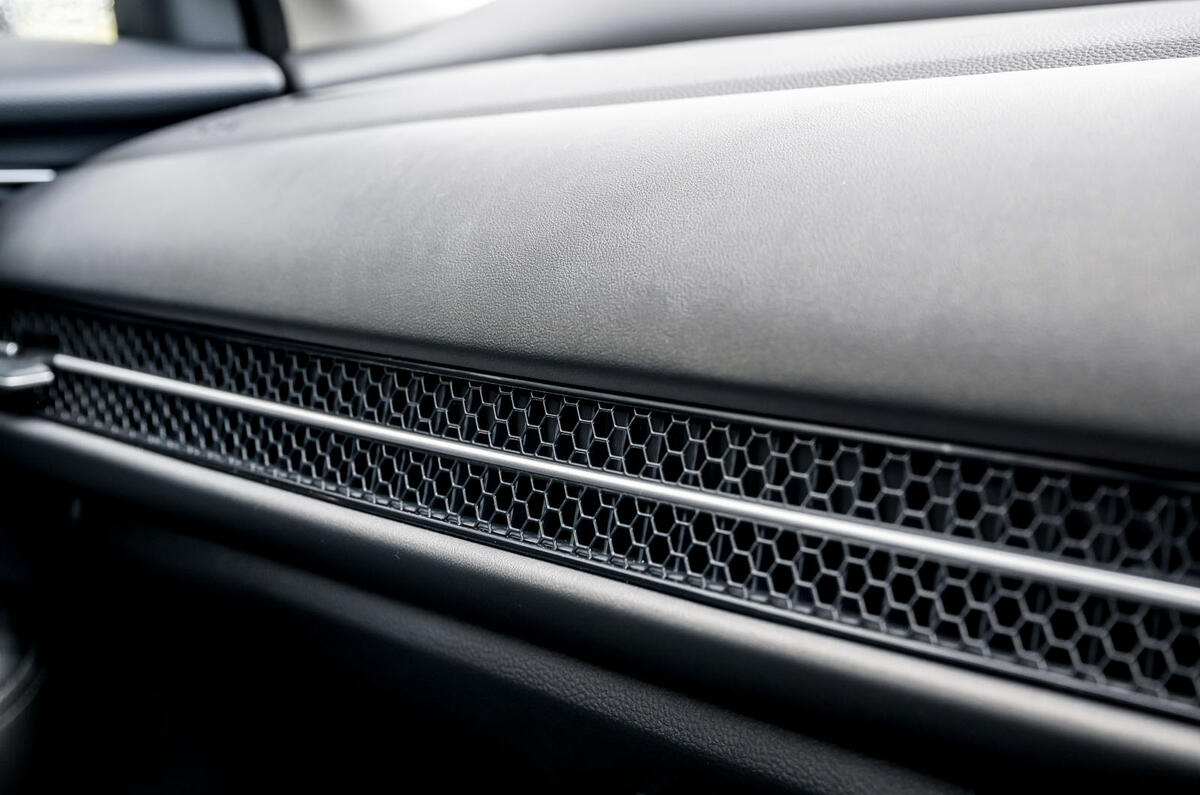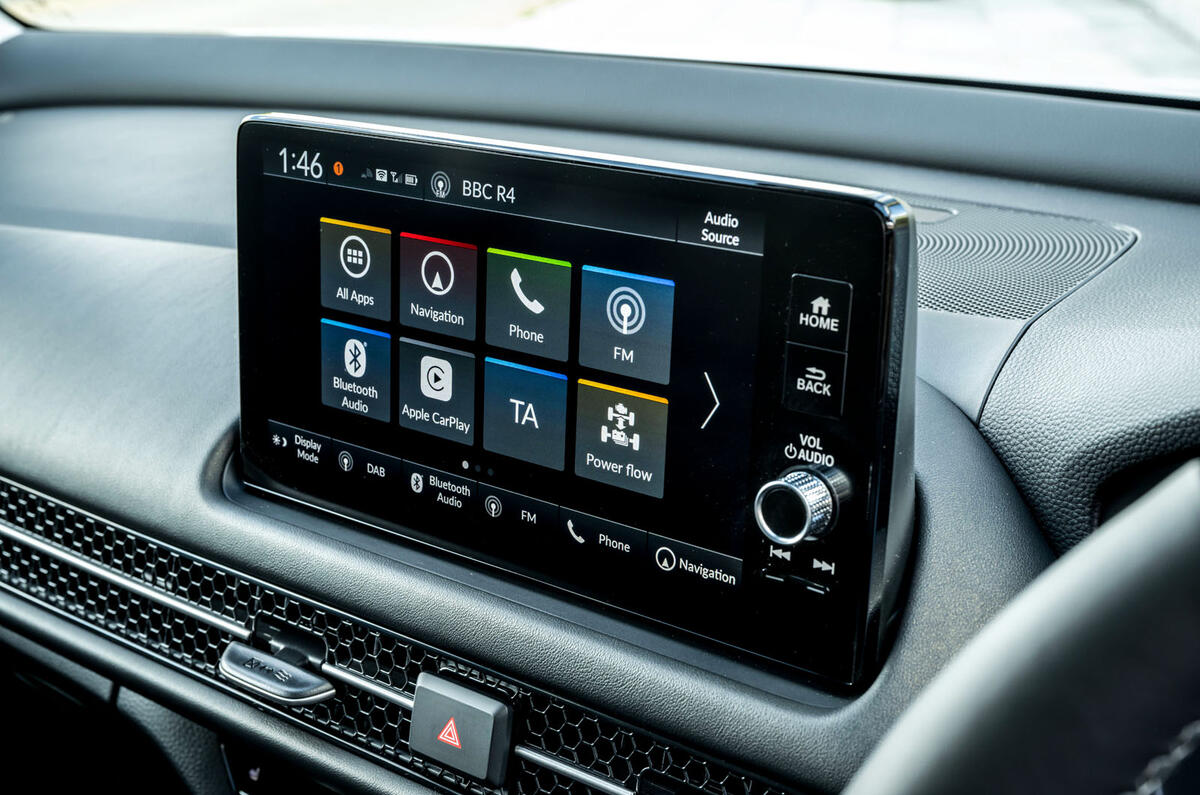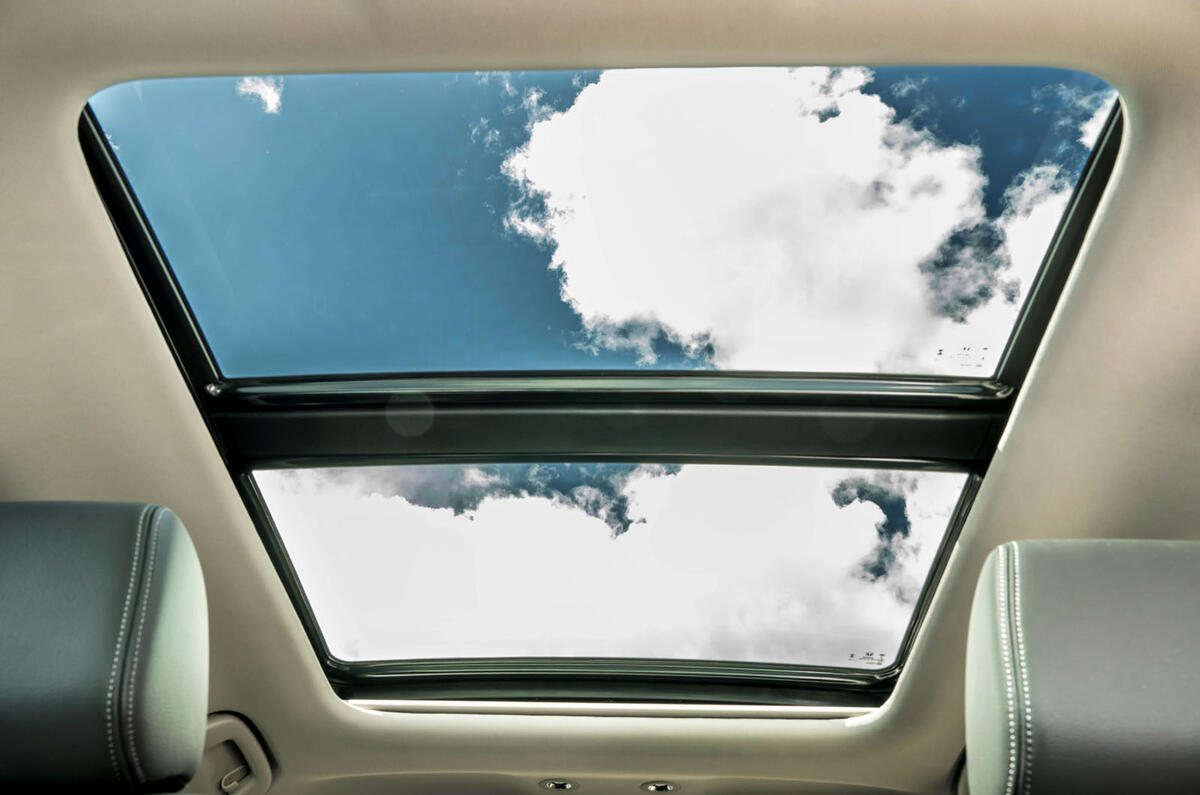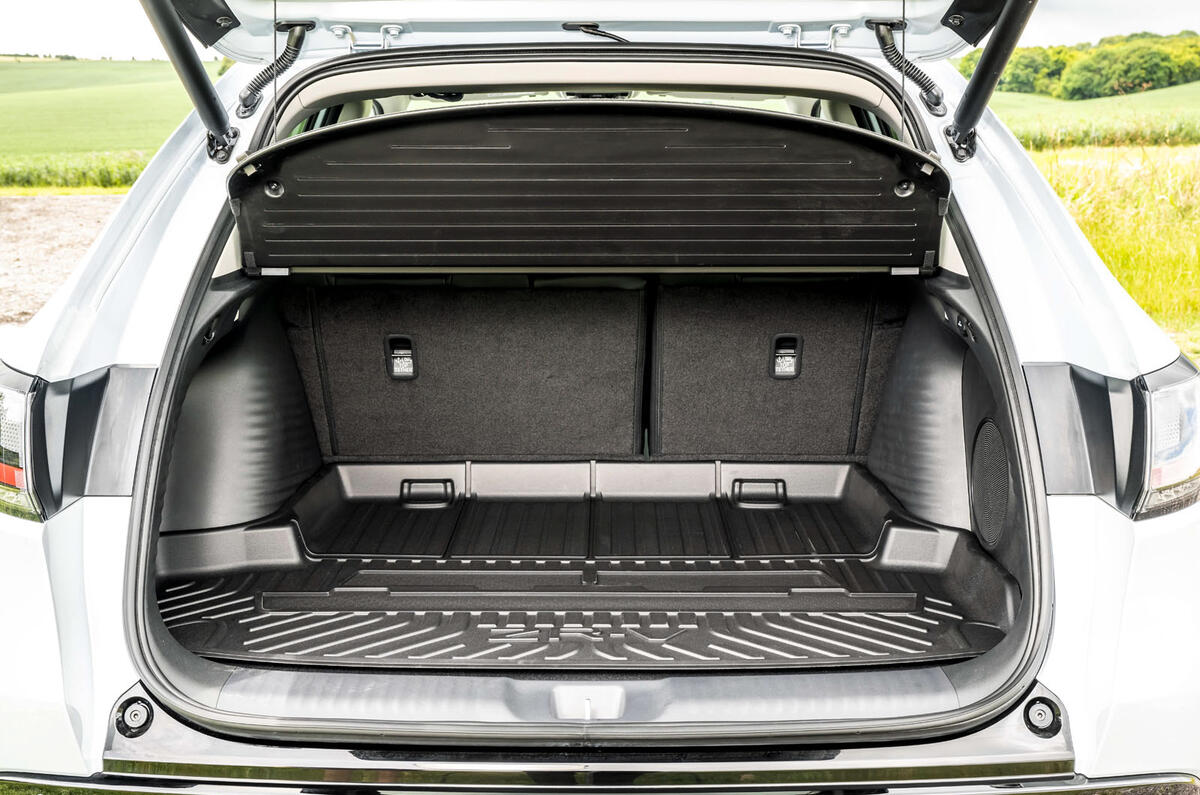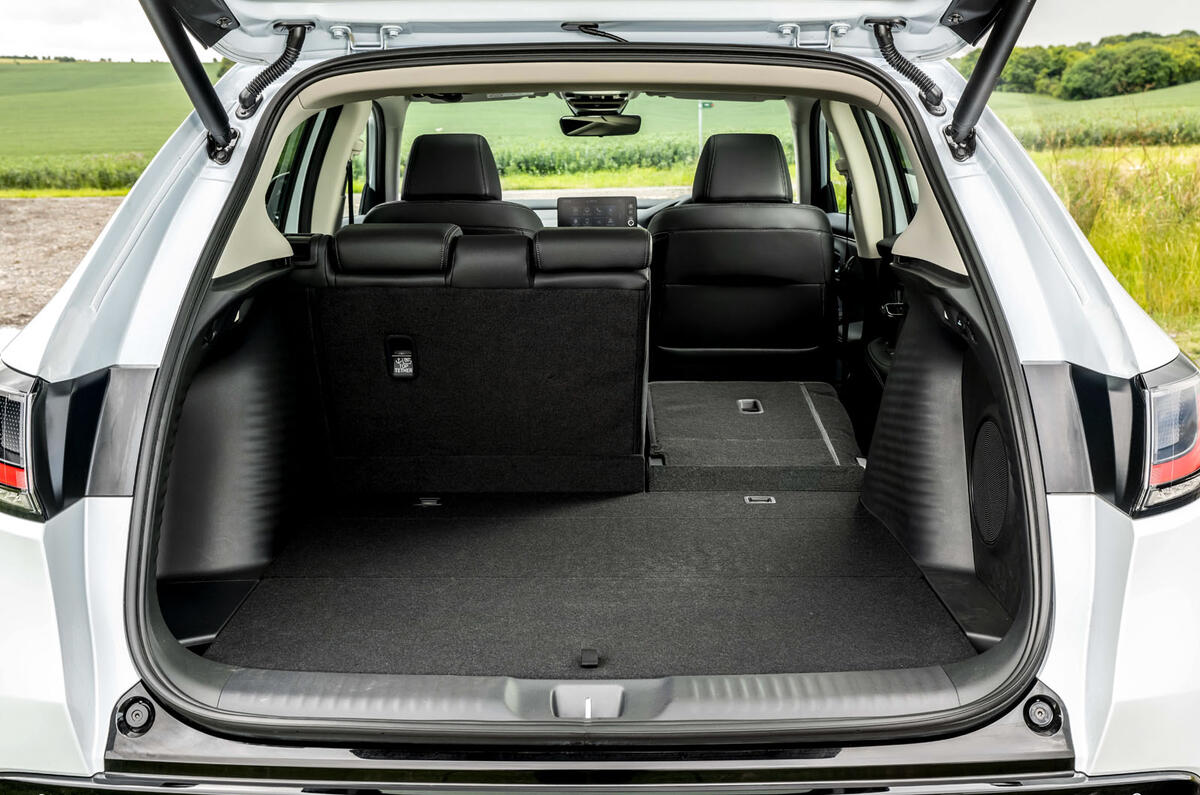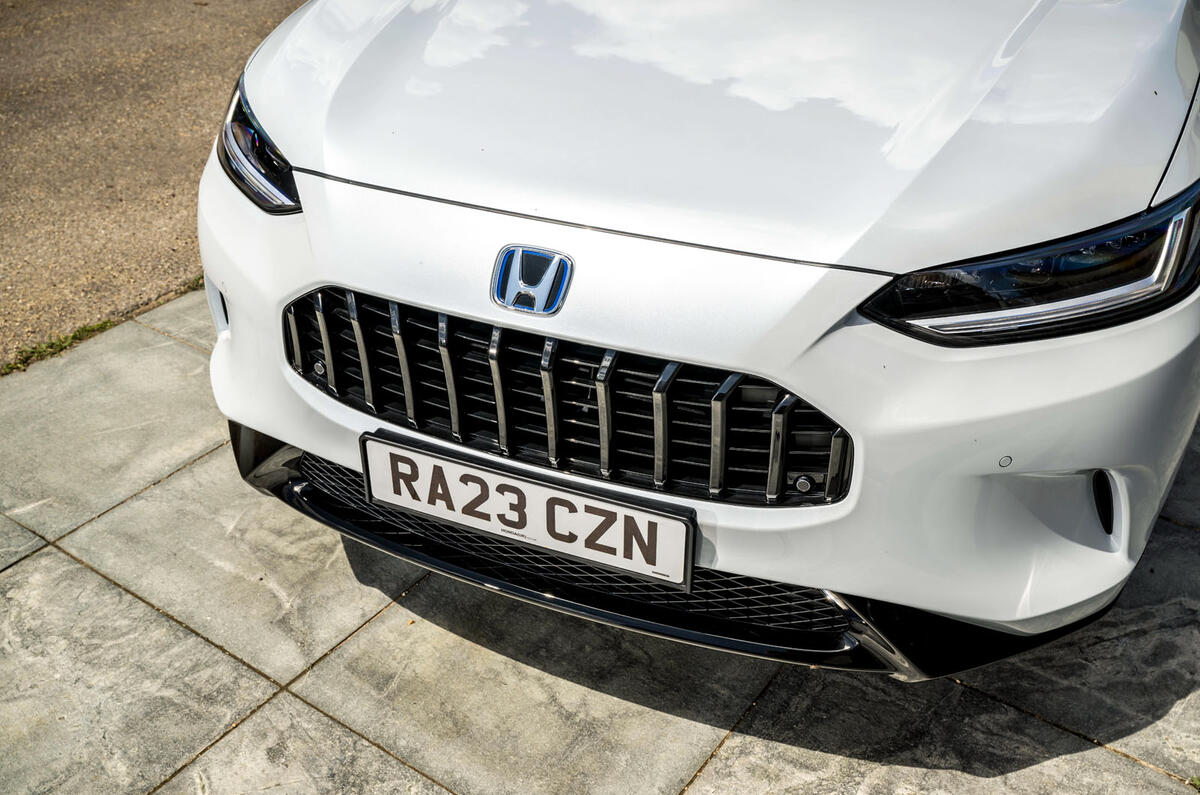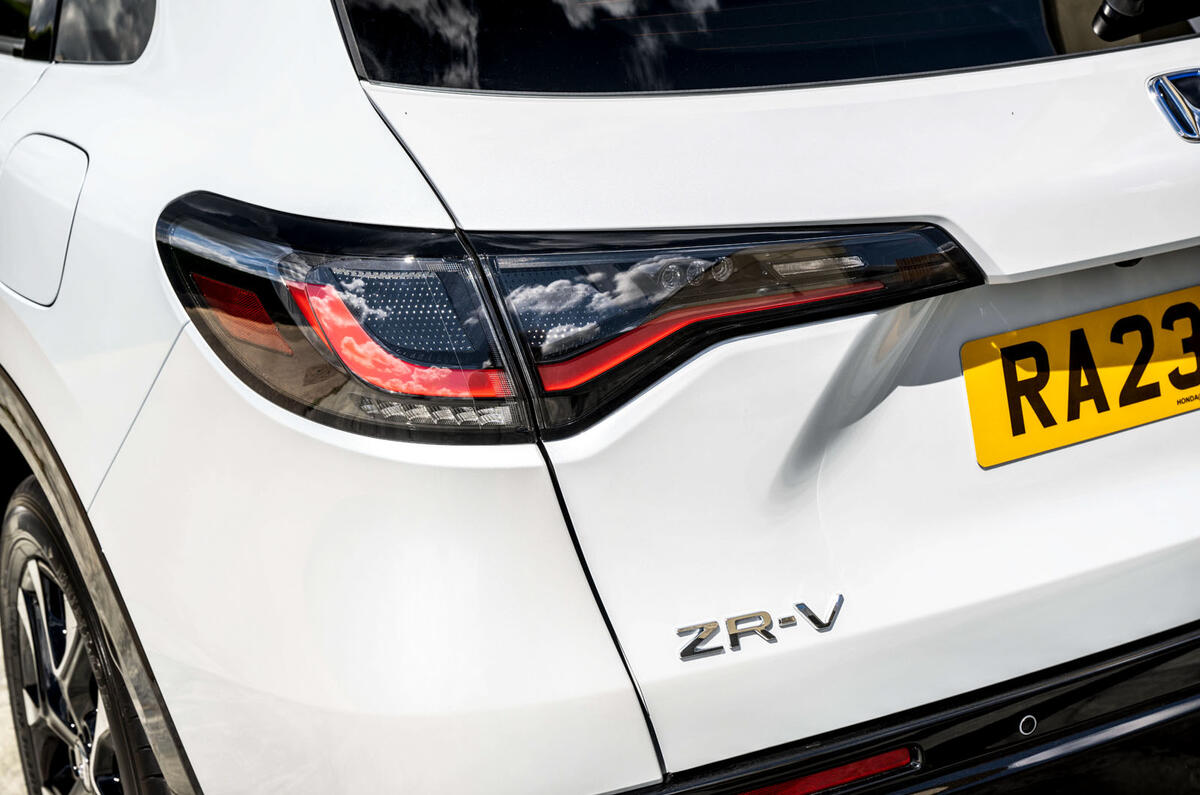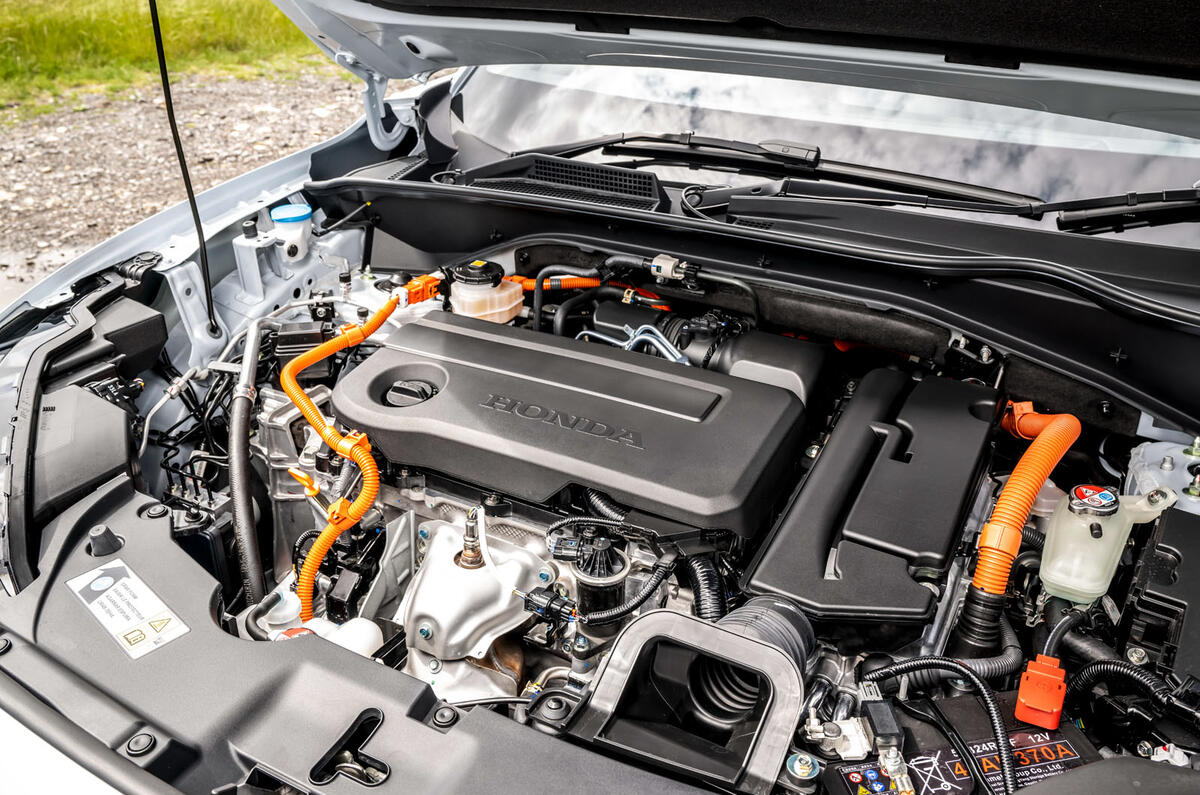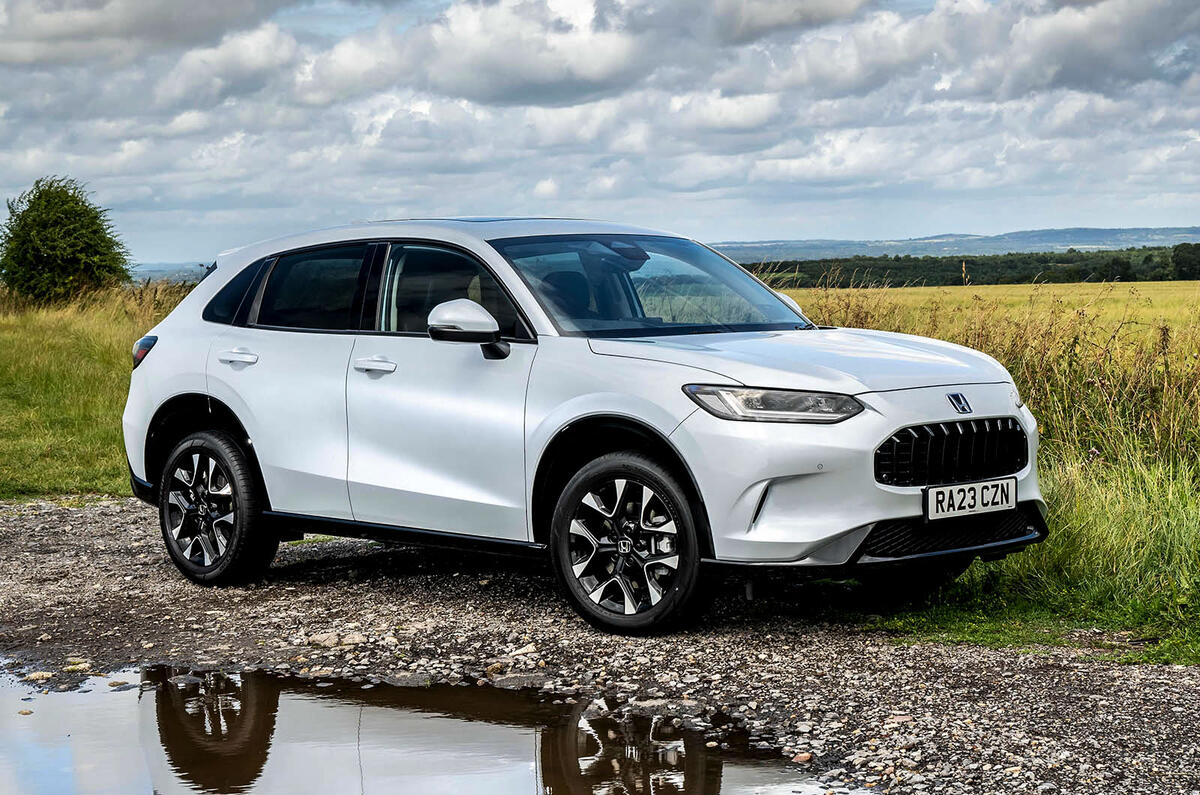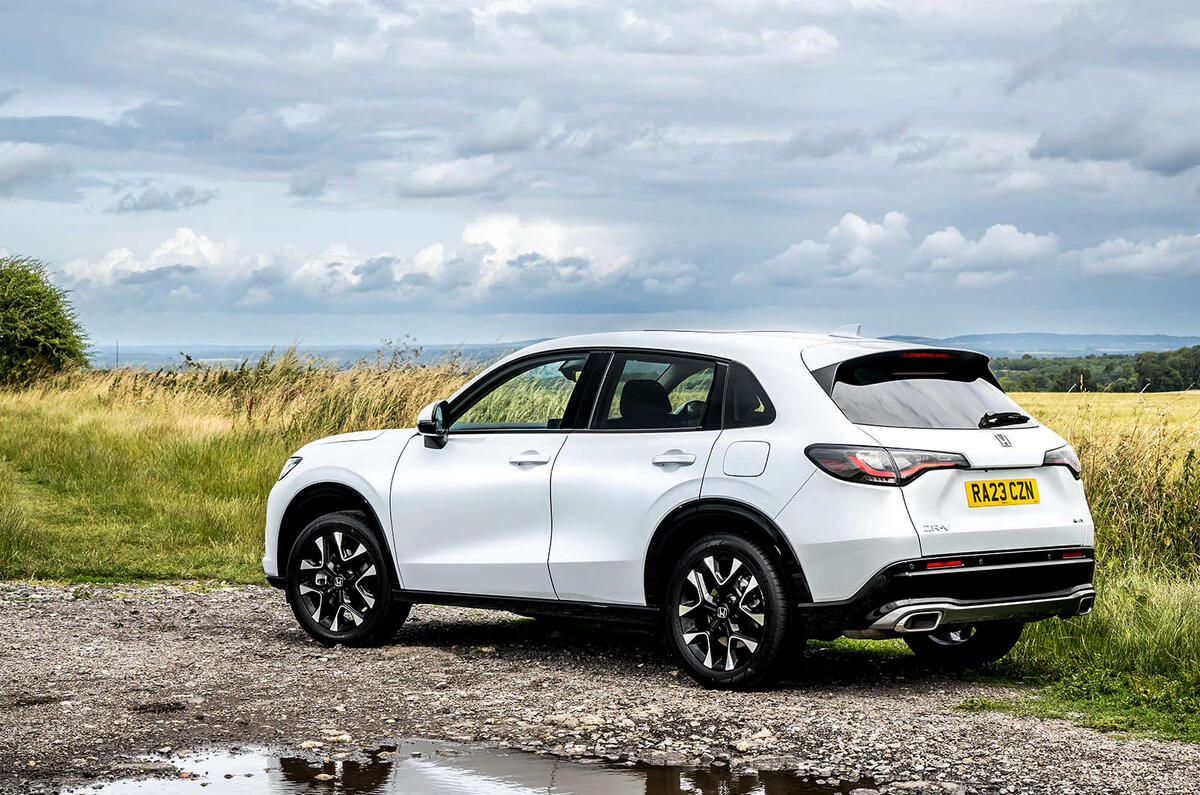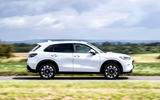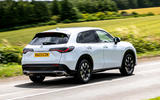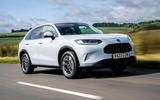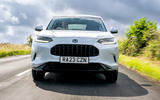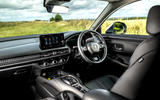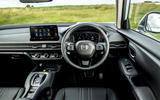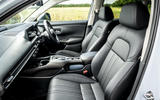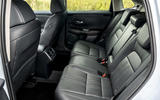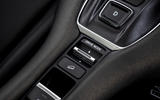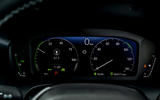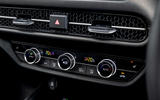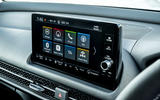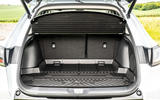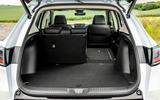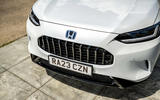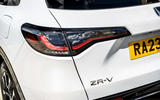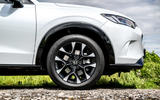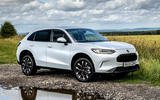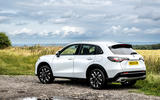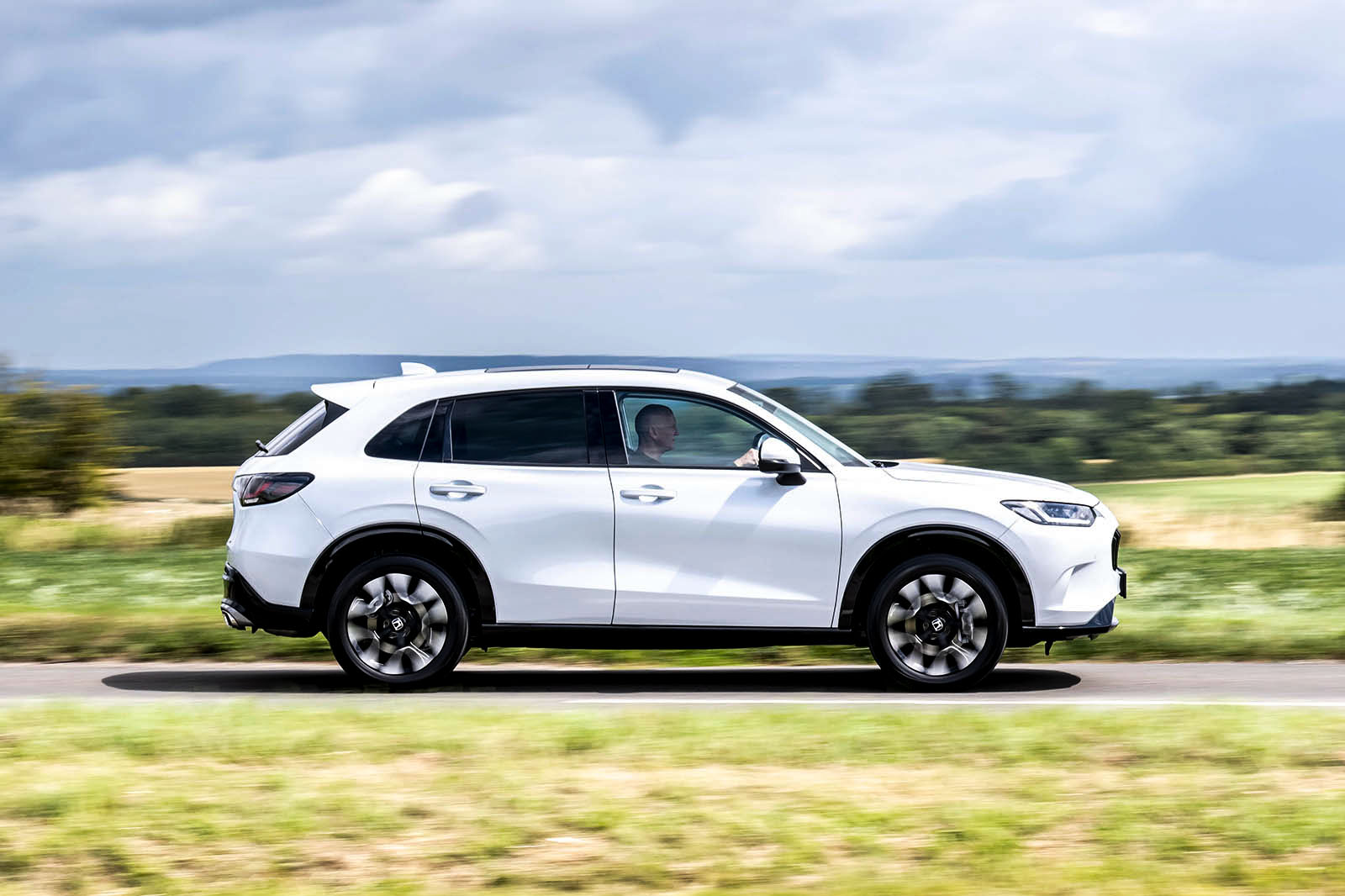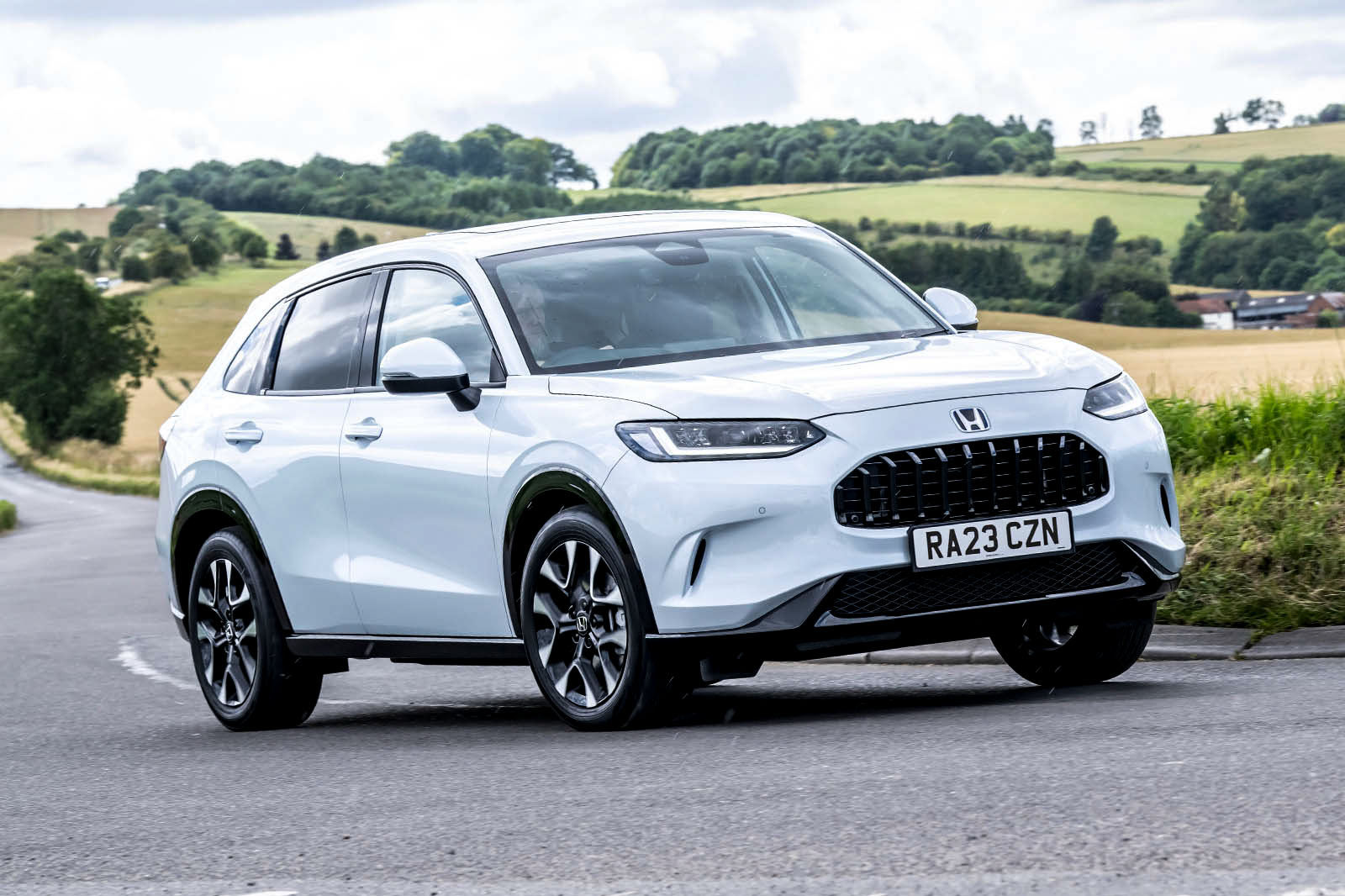The ZR-V departs more from the template set by the Civic mostly on the inside - if only a little.
The dashboard has the same design, featuring a horizontal strip of air vents - and the clicky physical buttons and dials for the climate control are as welcome as ever. The 9.0in touchscreen for the infotainment isn’t the crispest or most generously sized, and its factory sat-nav system isn’t especially clear, but shortcut buttons and wireless smartphone mirroring mean it’s largely simple and easy to use.
The cabin materials have had a gentle quality uplift from the Civic's, however, with more soft-touch padding on the doors and a more sculpted centre console with a little storage underneath it (unlike with the Civic, there won’t be a manual version of the ZR-V sold anywhere in the world, so no space needs to be reserved for a shift linkage).
The ZR-V also has metal paddles behind the steering wheel, used for swapping brake regeneration levels, which is a first in a Honda since the iconic NSX. Now that’s some serious pub trivia.
The one thing sticking out as a little odd is the driving position. It’s the same as in the Civic, just slightly higher-set. The Civic sits you low, with your legs outstretched, in a comfortable seat with a good amount of adjustment. That’s great for a hatchback, but a lot of people buy SUVs for the slightly more upright, bent-legged seating position that’s easier to access and affords better visibility. So it feels a bit as if the ZR-V is trying to please the people who prefer a hatchback anyway. This could be a big strength for some buyers but a negative for others.
Rear cabin space is generous, with good leg room and head room, even for taller adults, and a very shallow centre tunnel. The same grade of materials as in the front is used in the rear and there are two USB ports and air-con vents, so the rear passengers won’t feel like they've ended up in the cheap seats.
The boot, by contrast, is rather small for the class. The ZR-V’s 380-litre capacity is down quite significantly on the hybrid versions of the Kia Sportage (587 litres) and Nissan Qashqai (504) and even the Civic (although don’t take that comparison too seriously, as these numbers only refer to below-the-windowline space and the ZR-V will have more of it above the roller cover).
Numbers aside, the boot seems practical enough, with a flat floor and a panel that can flip up to form a divider; but it ought to do better. There is a little under-floor storage space, but you lose it in the case of upper-tier models, because of the premium audio system’s amplifier.
Fans of Honda’s Magic Seats (which flip up cinema-style to let you load tall items into the rear footwells) will be disappointed too. As with the Civic, Honda prioritised ride and handling, so used a multi-link rear axle instead of a more compact twist-beam one. That meant the fuel tank had to go in the usual spot under the rear bench, making the Magic Seats impossible. The smaller Jazz and HR-V are the only two cars in the line-up to still have them.





